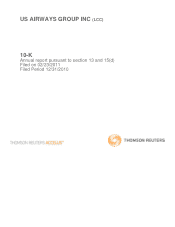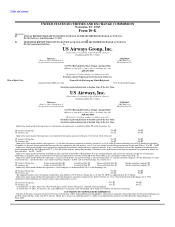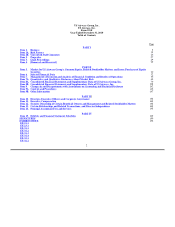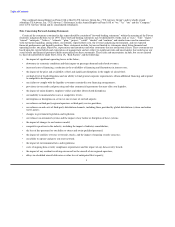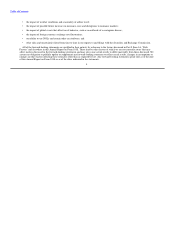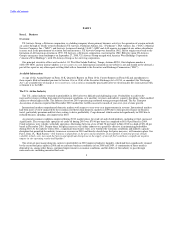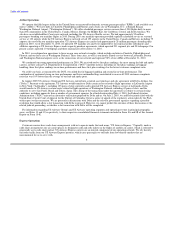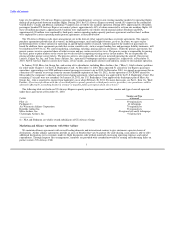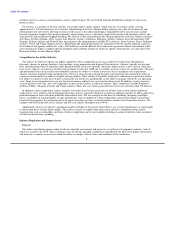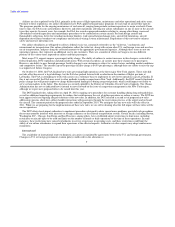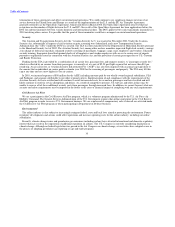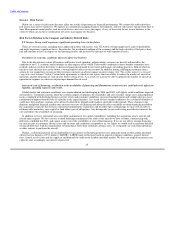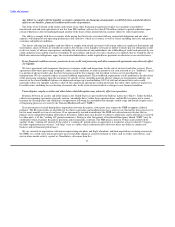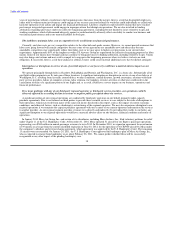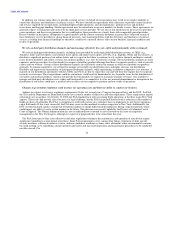US Airways 2010 Annual Report Download - page 10
Download and view the complete annual report
Please find page 10 of the 2010 US Airways annual report below. You can navigate through the pages in the report by either clicking on the pages listed below, or by using the keyword search tool below to find specific information within the annual report.
Table of Contents
Airlines are also regulated by the FAA, primarily in the areas of flight operations, maintenance and other operational and safety areas.
Pursuant to these regulations, our airline subsidiaries have FAA-approved maintenance programs for each type of aircraft they operate.
The programs provide for the ongoing maintenance of such aircraft, ranging from periodic routine inspections to major overhauls. From
time to time, the FAA issues airworthiness directives and other regulations affecting our airline subsidiaries on one or more of the aircraft
types they operate. In recent years, for example, the FAA has issued or proposed mandates relating to, among other things, increased
airworthiness related inspections and maintenance procedures to be conducted on certain aircraft, fuel tank design control and
flammability reductions, better fire retardant insulation blankets, wide spread fatigue damage rules, aircraft life limitations, aircraft
dependent surveillance broadcast out compliance and electrical wiring systems maintenance. Regulations of this sort tend to enhance
safety and increase operating costs.
Our airline subsidiaries are obligated to collect a federal excise tax, commonly referred to as the "ticket tax," on domestic and
international air transportation. Our airline subsidiaries collect the ticket tax, along with certain other U.S. and foreign taxes and user fees
on air transportation, and pass along the collected amounts to the appropriate governmental agencies. Although these taxes are not our
operating expenses, they represent an additional cost to our customers. There are a number of efforts in Congress to raise different
portions of the various taxes imposed on airlines and their passengers.
Most major U.S. airports impose a passenger facility charge. The ability of airlines to contest increases in this charge is restricted by
federal legislation, DOT regulations and judicial decisions. With certain exceptions, air carriers pass these charges on to passengers.
However, our ability to pass through passenger facility charges to our customers is subject to various factors, including market conditions
and competitive factors. The current cap on the passenger facility charge is $4.50 per passenger, although there are efforts to raise the cap
to a higher level before Congress.
On October 10, 2008, the FAA finalized new rules governing flight operations at the three major New York airports. These rules did
not take effect because of a legal challenge, but the FAA has pushed forward with a reduction in the number of flights per hour at
LaGuardia. The FAA is attempting to work with carriers on a voluntary basis to implement its new lower operations cap at LaGuardia. If
this is not successful, the FAA may resort to other methods to reduce congestion in New York. Additionally, the DOT recently finalized a
policy change that will permit airports to charge differentiated landing fees during congested periods, which could impact our ability to
serve certain markets in the future. This decision was recently upheld by the District of Columbia Circuit Court of Appeals. The Obama
Administration has not yet indicated how it intends to move forward on the issue of congestion management in the New York region,
although we expect new proposed rules to be issued later this year.
The DOT finalized rules, taking effect on April 29, 2010, requiring new procedures for customer handling during long onboard delays,
as well as additional reporting requirements for airlines that could increase the cost of airline operations or reduce revenues. The DOT has
been aggressively investigating alleged violations of the new rules. In addition, the DOT released a second set of proposed new rules
addressing concerns about how airlines handle interactions with passengers through the reservations process, at the airport and on board
the aircraft. The comment period on the proposed rules ended in September 2010. We anticipate that any new rules will take effect in
2011. While we are preparing for the implementation of these new rules, we are still evaluating what the full impact of these rules will be
on our operations.
The DOT allows local airport authorities to implement procedures designed to abate special noise problems, provided such procedures
do not unreasonably interfere with interstate or foreign commerce or the national transportation system. Certain locales, including Boston,
Washington D.C., Chicago, San Diego and San Francisco, among others, have established airport restrictions to limit noise, including
restrictions on aircraft types to be used and limits on the number of hourly or daily operations or the time of these operations. In some
instances, these restrictions have caused curtailments in service or increases in operating costs, and these restrictions could limit the
ability of our airline subsidiaries to expand their operations at the affected airports. Authorities at other airports may adopt similar noise
regulations.
International
The availability of international routes to domestic air carriers is regulated by agreements between the U.S. and foreign governments.
Changes in U.S. or foreign government aviation policy could result in the alteration or
9

